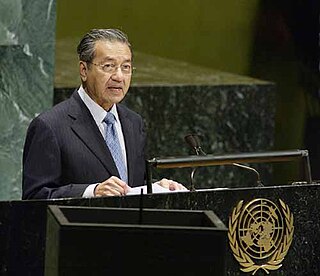 W
WThis article lists important figures and events in Malaysian public affairs during the year 1981, together with births and deaths of notable Malaysians.
 W
WThis article lists important figures and events in Malaysian public affairs during the year 1982, together with births and deaths of notable Malaysians.
 W
WAyutthaya Historical Park covers the ruins of the old city of Ayutthaya, Phra Nakhon Si Ayutthaya Province, Thailand. The city of Ayutthaya was founded by King Ramathibodi I in 1351. However, the establishment of Ayutthaya is far older than what we thought. Evidence shown that the area was already populated during Mon Dvaravati period. Sources further mentioned that around 850 AD, the Khmers occupied the area and established a stronghold there, named it as Ayodhya after one of the holiest Hindu cities of India of the same name. Early history of Ayutthaya is historically connected to this Khmer settlement. Consistently, Prince Damrong also agreed that there was a city called Ayodhya which was found by the Khmers ruling from Lopburi at the point where the three rivers meet. Excavation map shows the traces from an ancient baray close to the southwestern tip of Wat Yai Chai Mongkhon which could has been built on a former important Khmer temple complex.
 W
WThe Ba Chúc massacre was carried out by the Kampuchean Revolutionary Army from April 18 to April 30, 1978 in Ba Chúc, Tri Tôn, An Giang Province, Vietnam. Of those who had lived in Ba Chúc, 3,157 civilians were killed. Only two survived the massacre. In addition, more than 200 people were killed or injured by land mines deployed by the Khmer Rouge upon retreat.
 W
WJosé Basco y Vargas,1st Count of the Conquest of Batanes Islands (Spanish: José Basco y Vargas, primer conde de la conquista de las islas Batanes was a naval officer of the Spanish navy who served as the 53rd governor of the Spanish Philippines under the Spanish Empire, from 1778 to 1787. An "economic minded" governors-general in Spanish-ruled Philippines, his rule tried to subjugate the Ivatan natives of Batanes, which led to the murder of Ivatan indigenous hero Aman Dangat.
 W
WThe Battle of Yultong, also known as the Battle of Meiluodong, Battle of Yuldong, or Battle of Yuldong-ri, was a battle of the Korean War. It was fought between elements of the Chinese People's Volunteer Army 34th Division and the Filipino 10th Battalion Combat Team (BCT), north of Yeoncheon during April 22–23, 1951. The battle was part of the Chinese Spring Offensive.
 W
WBomb Harvest is a 2007 documentary film directed by Australian filmmaker Kim Mordaunt and produced by Sylvia Wilczynski. It explores the consequences of war in Laos as it follows an Australian bomb disposal specialist, training locals in the skill of detonating bombs while trying to stop villagers, particularly children, from finding them and using them for scrap metal.
 W
WThe Butuan Silver Palaeograph, also known as the "Butuan Silver Strip", is a piece of metal with inscriptions found in Butuan province in mid-1970s by a team of archaeologists from the National Museum of the Philippines. Treasure hunters who were looking for old ceramics and gold ornaments discovered this metal strip inside a wooden coffin. Coffins of the same type, dating back to the 14th and 15th centuries, were found at the site. According to Dr. Jesus Peralta, found inside were human remains with artificially deformed skulls - a practice in this region limited to Southern Philippines and unpopular in Luzon. Due to the similarities found between the coffins, it is reasonable for archaeologists to assume that the latter came from that same era. Debate, however, arose regarding the origin of the said artifact, but until now, it is considered to belong to Butuan where it was found. Dr. Boechari of Indonesia, said Peralta, identified the writings as very close to a Javanese script that existed from the 12th to the 15th century. This yet-to-be-deciphered Butuan palaeograph is now in the hands of Proceso Gonzales, the city engineer of Butuan.
 W
WCambodia, Pol Pot, and the United States: The Faustian Pact is a 1991 book by Michael Haas, professor of political science at the University of Hawaii. Published with the end of the Cold War, the book analyzed the United States support for Pol Pot and the Khmer Rouge against Soviet-backed Vietnam.
 W
WChoeung Ek is the site of a former orchard and mass grave of victims of the Khmer Rouge – killed between 1975 and 1979 – in Dangkao Section, Phnom Penh, Cambodia, about 17 kilometres (11 mi) south of the Phnom Penh city centre. It is the best-known of the sites known as The Killing Fields, where the Khmer Rouge regime executed over one million people between 1975 and 1979.
 W
WClub Filipino was the first exclusive social club in the Philippines, founded on November 6, 1898 by Filipino high society, including Spanish mestizos and members of the native aristocracy. It is located between North Greenhills subdivision and the Greenhills Shopping Center in San Juan City.
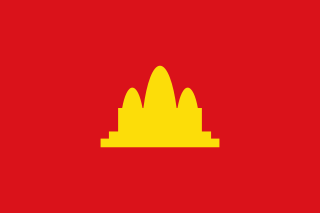 W
W"Dap Prampi Mesa Moha Chokchey" was the national anthem of Democratic Kampuchea from at least January 1976. Although the anthem may have been in use in the "liberated zone" much earlier, it was proclaimed the national anthem in article 18 of the Constitution of Kampuchea which was promulgated on 5 January 1976. Supposedly, the Khmer Rouge and/or Pol Pot himself wrote the piece, but its origin remains unknown.
 W
WThe known early history of Thailand begins with the earliest major archaeological site at Ban Chiang. Dating of artifacts from this site is controversial, but there is a consensus that at least by 3600 BCE, inhabitants had developed bronze tools and had begun to cultivate wet rice, providing the impetus for social and political organisation.
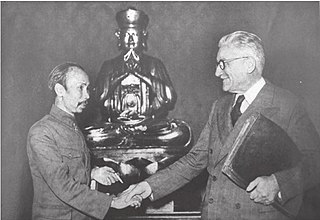 W
WThe Fontainebleau Agreements were a proposed arrangement between the France and the Vietminh, made in 1946 before the outbreak of the First Indochina War. The agreements affiliated Vietnam under the French Union. At the meetings, Ho Chi Minh pushed for Vietnamese independence but the French would not agree to this proposal.
 W
WThe Hikayat Banjar is the chronicle of Banjarmasin, Indonesia. This text, also called the History of Lambung Mangkurat, contains the history of the kings of Banjar and of Kotawaringin in southeast and south Borneo respectively.
 W
WHikayat Iskandar Zulkarnain is a Malay epic describing fictional exploits of a fictional king Iskandar Zulkarnain, he is a king who was briefly mentioned in the Quran. The oldest existing manuscript is dated 1713, but is in a poor state. Another manuscript was copied by Muhammad Cing Sa`idullah at about 1830.
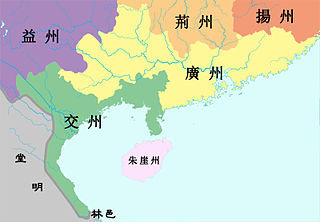 W
WJiaozhou was an imperial Chinese province under the Han and Jin dynasties. Under the Han, the area included Liangguang and northern Vietnam but Guangdong was later separated to form the province of Guangzhou by Sun Quan following the death of Shi Xie and lasted until the creation of Protectorate General to Pacify the South in 679.
 W
WLaihka State was a state in the central division of the Southern Shan States of Burma, with an area of 3711 km².
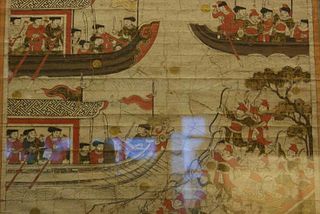 W
WThe Lê–Mạc War was a long-time civil war waged between two Vietnamese dynasties, the Mạc and Revival Lê, during the Southern and Northern Dynasties period of Vietnamese history.
 W
WLý Thiên Bảo (499–555) was the older brother of Lý Nam Đế, who tried unsuccessfully to resist the forces of China's Liang dynasty.
 W
WThe Makassar Revolt (กบฏมักกะสัน) was an uprising in 1686 in the Kingdom of Ayutthaya during the reign of King Narai.
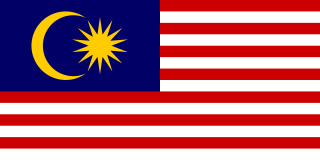 W
WThe Greater Malayan Confederation, or Maphilindo, was a proposed, nonpolitical confederation of the three Southeast Asian countries.
 W
WTharrawaddy Min was the 8th king of the Konbaung Dynasty of Burma. He repudiated the Treaty of Yandabo and almost went to war with the British.
 W
WThe Minto Stone or Sanggurah Inscription, known in Indonesia as Prasasti Sanggurah, is a 3 long tons (3.0 t), 2 metres (6.6 ft) tall epigraphy found in Malang, East Java province. In 1812, Sir Thomas Stamford Raffles, then Lieutenant-Governor of the island of Java, removed it along with the so-called "Calcutta Stone" as a token of appreciation to his superior, then British Governor-General of India, Lord Minto. It consequently became part of the Minto family estate near Hawick, Roxburghshire, Scotland.
 W
WThe Pamalayu campaign was a military expeditionary force sent by Javanese King Kertanegara of Singhasari to conquer the Sumatran Melayu Kingdom. It was decreed in 1275, though perhaps not undertaken until later.
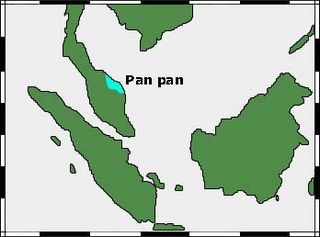 W
WPan Pan or Panpan is a lost small Hindu Kingdom believed to have existed around the 3rd to 7th Century CE. It is believed to have been located on the east coast of the Malay peninsula, with opinion varying from somewhere in Kelantan or Terengganu, Malaysia to the vicinity of Amphoe Phunphin, Surat Thani Province, Thailand. It is speculated to be related to Pan tan i, which occupied the same area many centuries later, and has some differences in culture and language to other Malay regions nearby.
 W
WThe flag of the People's Republic of Kampuchea was a historical flag of Cambodia from 1979 to 1993, used during the Cambodian–Vietnamese War.
 W
WBendahara Paduka Raja Tun Perak was the fifth and most famous bendahara, a Malay rank similar to a prime minister, of the Sultanate of Malacca. He served under four sultans from 1456 to 1498. Early in his life, Perak was a soldier-statesman for Malaccan rulers. In 1445, he led the Malaccan army to victory by defeating Siamese invaders. As a result, he was made bendahara in 1456.
 W
WProject 404 was the code name for a covert United States Air Force advisory mission to Laos during the later years of the Second Indochina War, which would eventually become known in the United States as the Vietnam War. The purpose of the mission was to supply the line crew technicians needed to support and train the Royal Laotian Air Force, while Raven Forward Air Controllers were brought in to supply piloting expertise and guidance for running a tactical air force. The two programs together comprised Palace Dog.
 W
WThe Propaganda Movement was a period of time when native Filipinos were calling for reforms, lasting approximately from 1880 to 1898 with the most activity between 1880 and 1895.
 W
WDiego Ronquillo was the fifth Spanish governor of the Philippines, from March 10, 1583 until May 1584. He was the brother of his predecessor, Gonzalo Ronquillo de Peñalosa, and served as interim governor for little more than a year. Manila suffered heavy damage from a fire that occurred on March 19, 1583.
 W
WAt the present time, there is no known Scouting program in Laos, one of only four of the world's independent countries that do not have Scouting.
 W
WDatu Sikatuna was a Datu or chieftain of the Bool Kingdom in the island of Bohol in the Philippines. He made a blood compact (sanduguan) and alliance with the Spanish explorer Miguel López de Legazpi on March 25, 1565 at Hinawanan Bay, barangay Hinawanan, Loay. Their blood compact is the first Treaty of Friendship between Spain and the Philippines. The previous site of the pact was at barangay Bool, Tagbilaran City but later concluded the event actually happened at barangay Hinawanan, Loay, Bohol through Resolution No. 4, issued by the National Historical Institute in 2005.
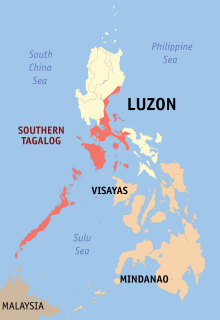 W
WSouthern Tagalog, designated as Region IV, was an administrative region in the Philippines that comprised the current regions of Calabarzon and Mimaropa, the province of Aurora of Central Luzon, and several cities of Metro Manila.
 W
WThe Suai Church massacre occurred on 6 September 1999, in Suai, Cova Lima District in southwestern East Timor, two days after the results of the independence referendum were announced.
 W
WThe Sultanate of Serdang was an ancient Malay-Indonesian monarchy, Serdang was founded in 1723 and joined the Republic of Indonesia in 1946. The Sultanate separated from Sultanate of Deli after a dispute over the royal throne in 1720. Like other kingdoms on the east coast of Sumatra, Serdang prospered because of the opening of tobacco, rubber and oil palm plantations.
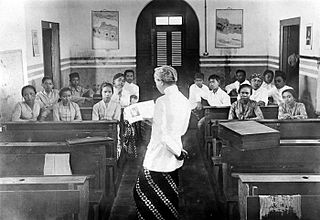 W
WThe Taman Siswa was a Javanese educational movement in the Dutch East Indies, founded in July 1922 by Ki Hadjar Dewantara (1889–1959), who was born as Raden Mas Soewardi Soerjaningrat, a Javanese nobleman.
 W
WTanette was an Indonesian monarchy founded around 1547.
 W
WThao Thep Krasattri (ท้าวเทพกระษัตรี) and Thao Si Sunthon (ท้าวศรีสุนทร) were styles awarded to Than Phu Ying Chan (ท่านผู้หญิงจัน), wife of the then recently deceased governor of Mueang Thalang, Phuket Province, and her sister, Khun Muk (คุณมุก), who defended the island in the Burmese–Siamese War (1785–1786). According to popular belief, they repelled a five-week invasion by Burmese in 1785, killing male soldiers and rallying Siamese troops. They were also referred to as Chan and Mook.
 W
WTiong Hoa Hwee Koan was an Indonesian Chinese organization founded on March 17, 1900 in Batavia, Dutch East Indies.
 W
WThe Vang Tao Incident occurred on 3 July 2000, when a group of armed insurgents and mercenaries attacked a Lao customs outpost at the southern border town of Vang Tao. The raiders, as they came to be described, were easily routed leaving six of their own dead and 27 were arrested by Thai authorities. Of those, 11 were Thai nationals.
 W
WVisoun was the king of Lan Xang from 1500 until 1520. He was the seventh son of King Sai Tia Kaphut, King of Lan Xang. He was appointed as Governor of Vientiane in 1480 and as Chief Minister with the title of Phya Sena Muang in 1491 with the reign name of Visoun (Lightning). He served as Regent for his minor nephew from 1495 to 1497. He deposed his nephew and was proclaimed as King in 1500. He ascended the throne and was crowned King in 1501. His reign was prosperous and peaceful with a large number of shrines and monuments being constructed, including the Maha Vihara of Wat Visoun, which he built to house the palladium of Luang Prabang, the Phra Bang, which had been at Vientiane since 1359. A number of important religious texts and literary works were composed or translated into Lao during his reign. He died at Vientiane in 1520.
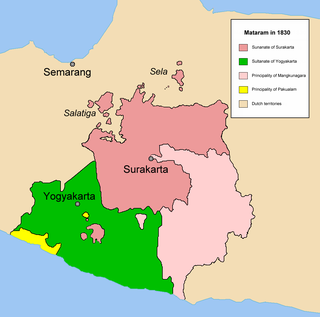 W
WThe Vorstenlanden were four native, princely states on the island of Java in the colonial Netherlands Indies. They were nominally self-governing vassals under suzerainty of the Kingdom of the Netherlands. Their political autonomy however became increasingly constrained by severe treaties and settlements. One of these continues to exist as a princely territory within the current independent republic of Indonesia.
 W
WWuntho or Waing Hso was a native state of Upper Burma when Burma (Myanmar), was under British control. It had an area of around 6,200 square kilometres (2,400 sq mi) with 150,000 inhabitants and lay midway between the Ayeyarwady River and Chindwin Rivers.